
Kecskemét: The Heart of Hungarian Puszta
Discover Kecskemét, Hungary's Art Nouveau gem, where rich history, cultural festivals, and natural wonders converge for an unforgettable travel experience.
Nestled in the heart of Hungary, Kecskemét is a captivating city known for its rich history, vibrant culture, and picturesque landscapes. Often referred to as the 'City of Art Nouveau,' Kecskemét boasts a stunning array of architecture, ranging from grand churches to ornate civic buildings. A stroll through the city reveals the intricacies of Hungarian craftsmanship, with buildings like the Cifrapalota (Ornamented Palace) standing as a testament to the city’s artistic heritage. Kecskemét is also famous for its thriving cultural scene. The city is home to numerous museums, theaters, and music festivals, making it a haven for art lovers and history buffs alike. The Kecskemét Animation Film Festival, held biennially, attracts artists and enthusiasts from around the globe. For those interested in local history, the Hungarian Museum of Photography and the Kecskemét Gallery offer a deep dive into the city’s past and present. Nature enthusiasts will find plenty to explore in and around Kecskemét. The nearby Kiskunság National Park offers a diverse range of flora and fauna, perfect for hiking, bird watching, and photography. The thermal baths in the region provide a relaxing retreat, offering therapeutic benefits and a chance to unwind in natural surroundings. Kecskemét is also a gastronomic delight, with local markets and eateries serving traditional Hungarian dishes. Don’t miss the chance to try the famous apricot brandy, a local specialty that reflects the region’s agricultural bounty. With its blend of cultural richness, natural beauty, and culinary delights, Kecskemét promises an unforgettable experience for every traveler.
Local tips in Kecskemet
- Visit the Cifrapalota for a glimpse of stunning Art Nouveau architecture.
- Attend the Kecskemét Animation Film Festival if your visit coincides with the event.
- Explore Kiskunság National Park for hiking and bird watching opportunities.
- Relax in the thermal baths for a rejuvenating experience.
- Try the local apricot brandy, known as 'Kecskeméti Barackpálinka.'
- Visit on a Saturday to experience the local farmers' market.
Kecskemét: The Heart of Hungarian Puszta
Nestled in the heart of Hungary, Kecskemét is a captivating city known for its rich history, vibrant culture, and picturesque landscapes. Often referred to as the 'City of Art Nouveau,' Kecskemét boasts a stunning array of architecture, ranging from grand churches to ornate civic buildings. A stroll through the city reveals the intricacies of Hungarian craftsmanship, with buildings like the Cifrapalota (Ornamented Palace) standing as a testament to the city’s artistic heritage. Kecskemét is also famous for its thriving cultural scene. The city is home to numerous museums, theaters, and music festivals, making it a haven for art lovers and history buffs alike. The Kecskemét Animation Film Festival, held biennially, attracts artists and enthusiasts from around the globe. For those interested in local history, the Hungarian Museum of Photography and the Kecskemét Gallery offer a deep dive into the city’s past and present. Nature enthusiasts will find plenty to explore in and around Kecskemét. The nearby Kiskunság National Park offers a diverse range of flora and fauna, perfect for hiking, bird watching, and photography. The thermal baths in the region provide a relaxing retreat, offering therapeutic benefits and a chance to unwind in natural surroundings. Kecskemét is also a gastronomic delight, with local markets and eateries serving traditional Hungarian dishes. Don’t miss the chance to try the famous apricot brandy, a local specialty that reflects the region’s agricultural bounty. With its blend of cultural richness, natural beauty, and culinary delights, Kecskemét promises an unforgettable experience for every traveler.
When is the best time to go to Kecskemet?
Iconic landmarks you can’t miss
Fekete Gólya Étterem
Discover the rich flavors of Hungary at Fekete Gólya Étterem, a culinary haven in Kecskemét showcasing traditional recipes with a modern twist.

Cifra Palace
Explore Cifra Palace in Kecskemét, an Art Nouveau gem showcasing the city's rich cultural heritage and exquisite architectural beauty.
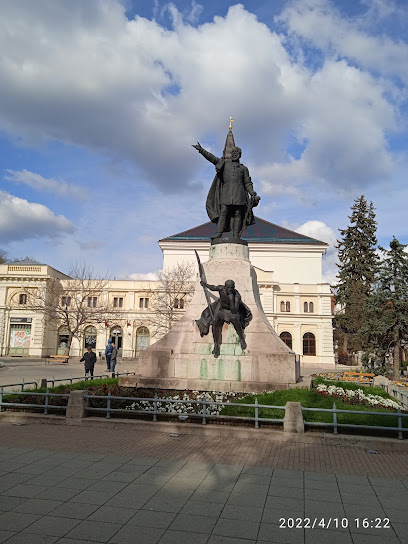
Hotel Három Gúnár
Discover comfort and local charm at Hotel Három Gúnár in Kecskemét, Hungary – a perfect base for your travel adventures.

Szórakaténusz Toy Museum and Workshop
Explore the joy of play at Szórakaténusz Toy Museum, where imagination comes to life through interactive exhibits and creative workshops in Kecskemét.
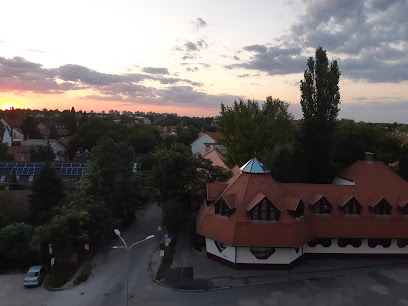
Co-Cathedral of the Ascension of the Lord, Kecskemét
Discover the architectural splendor and serene beauty of the Co-Cathedral of the Ascension of the Lord in Kecskemét, Hungary.

Kecskemét Város - Bozsó Gyűjtemény Alapítvány
Explore Hungarian artistry and cultural heritage at Kecskemét's Bozsó Gyűjtemény Alapítvány, a delightful museum for art lovers.

Kecskeméti arborétum
Explore the beauty of Kecskeméti Arborétum, a serene botanical garden in Kecskemét, Hungary, perfect for nature lovers and peaceful escapes.
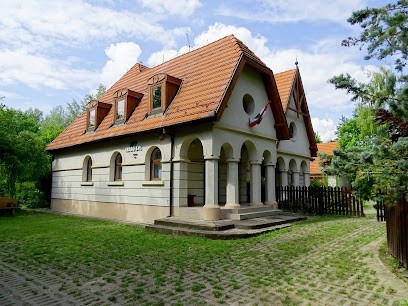
Zwack Kecskemét Brandy Manufacture
Experience the rich heritage of Hungarian brandy-making at Zwack Kecskemét Brandy Manufacture, where tradition meets taste.

Kecskeméti Római Katolikus Főplébánia
Explore the breathtaking Kecskeméti Roman Catholic Church, a stunning architectural marvel and serene spiritual haven in the heart of Kecskemét, Hungary.

Kecskemét Főtér
Explore the cultural charm of Kecskemét Főtér, a vibrant square showcasing stunning architecture and lively local events in Hungary.

Emlékkő
Discover the rich history and cultural significance of Emlékkő, a must-visit tourist attraction in Kecskemét, Hungary.

Rejtélyek Háza, Kecskemét
Discover the enchanting Rejtélyek Háza in Kecskemét, where puzzles and teamwork create unforgettable adventures for everyone.
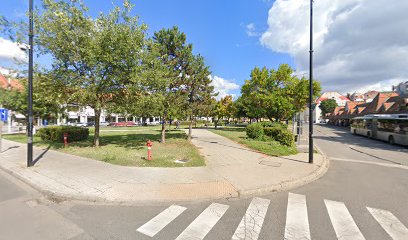
Szabadság tér
Explore Szabadság tér in Kecskemét – a vibrant town square rich in culture, history, and local flavors, perfect for relaxation and discovery.

Kálvin tér
Discover Kálvin Tér in Kecskemét, where historical charm meets vibrant local culture in the heart of Hungary.

Kossuth-szobor
Experience the Kossuth-szobor in Kecskemét, a significant statue honoring Hungary's revolutionary leader amidst beautiful landscapes.

Unmissable attractions to see
Kecskeméti Vadaskert
Discover Kecskeméti Vadaskert: A family-friendly zoo in Hungary showcasing diverse wildlife and promoting conservation in a beautiful natural setting.

Szabadidőpark
Experience the beauty and adventure of Szabadidőpark, a lush recreational oasis in Kecskemét, offering activities for all ages.
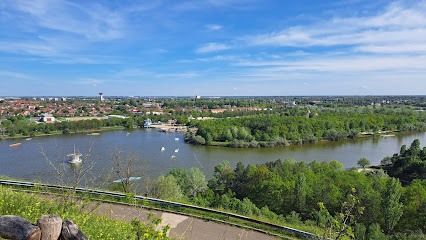
Cifra Palace
Discover the architectural beauty and rich cultural heritage of Cifra Palace, Kecskemét's premier museum and art gallery.

Hill Beach / RideCable
Experience the perfect blend of relaxation and adventure at Hill Beach and RideCable, Kecskemét's top tourist attraction for water sports enthusiasts.

Kecskeméti Arborétum
Explore Kecskeméti Arborétum, a tranquil botanical paradise in Hungary, showcasing diverse flora and serene landscapes for nature lovers and tourists alike.

Leskowsky Instrument Collection Foundation
Explore the Leskowsky Instrument Collection Foundation, a unique museum in Kecskemét, showcasing a diverse array of musical instruments from around the globe.

Szórakaténusz Toy Museum and Workshop
Explore the enchanting Szórakaténusz Toy Museum and Workshop in Kecskemét, where nostalgia meets creativity in a delightful collection of toys.

Co-Cathedral of the Ascension of the Lord, Kecskemét
Explore the architectural beauty and spiritual significance of Kecskemét's Co-Cathedral of the Ascension of the Lord, a cultural gem in Hungary.

Kecskemét Város - Bozsó Gyűjtemény Alapítvány
Explore the rich cultural tapestry of Hungary at the Bozsó Collection Foundation in Kecskemét, where art and history come alive.

Békás tó és szökőkút
Explore the tranquil beauty of Békási Tó és Szökőkút in Kecskemét, Hungary's serene memorial park, perfect for relaxation and reflection amidst nature.

Katona József Museum
Explore the Katona József Museum in Kecskemét, where Hungarian art and history come alive in a serene park setting.

Hungarian Museum of Photography
Explore the fascinating world of visual storytelling at the Hungarian Museum of Photography in Kecskemét, Hungary.

Arborétum kilátó
Explore the serene beauty of Kecskemét's Arborétum, a lush botanical paradise with stunning views and diverse plant species, perfect for nature lovers.

Zwack Kecskemét Brandy Manufacture
Explore the rich tradition of Hungarian spirits at the Zwack Kecskemét Brandy Manufacture, where heritage meets craftsmanship in every sip.
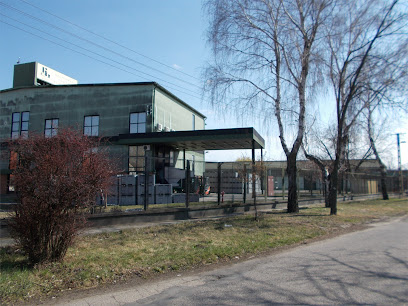
Kiskunság National Park
Experience the serene beauty and rich biodiversity of Kiskunság National Park, an essential destination for nature enthusiasts and adventure seekers in Hungary.
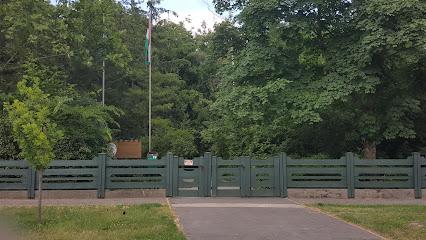
Essential places to dine
Fekete Gólya Étterem
Experience the flavors of Hungary at Fekete Gólya Étterem in Kecskemét – where tradition meets modern culinary artistry.

Csalánosi Csárda
Discover the flavors of Hungary at Csalánosi Csárda in Kecskemét - where tradition meets taste.

Sasfészek Étterem
Experience authentic Hungarian cuisine at Sasfészek Étterem in Kecskemét - where tradition meets flavor in every bite.

Kecskeméti Csárda és Borház
Experience authentic Hungarian cuisine and warm hospitality at Kecskeméti Csárda és Borház in the heart of Kecskemét.

Vincent Étterem
Experience the best of Hungarian cuisine at Vincent Étterem in Kecskemét – where tradition meets modern gastronomy.

Rozmaring Étterem
Experience the rich flavors of Hungary at Rozmaring Étterem in Kecskemét – a must-visit destination for food lovers.

Cézár Étterem - Ristorante Italiano - Tengeri halkülönlegességek
Experience authentic Italian flavors at Cézár Étterem in Kecskemét—home of exquisite seafood dishes and welcoming ambiance.

Olivolà - Locale Italiano
Experience authentic Italian cuisine at Olivolà in Kecskemét – where every bite takes you on a flavorful journey.

Itália Pizzéria
Discover authentic Italian flavors at Itália Pizzéria in Kecskemét—where every slice tells a story.

48 Étterem és Bár
Experience the best of Hungarian cuisine at 48 Étterem és Bár, where tradition meets modern elegance in Kecskemét.

Aranyhomok Kávézó és Gyorsétterem
Discover Aranyhomok Kávézó és Gyorsétterem: A delightful blend of local cuisine and fast food in the heart of Kecskemét.

Sugovica Halászcsárda
Discover authentic Hungarian flavors at Sugovica Halászcsárda in Kecskemét - a culinary gem offering delicious traditional dishes.

MyThai Asian Restaurant and Sushi Bar
Discover authentic Thai, Korean, and sushi delicacies at MyThai Asian Restaurant in Kecskemét – a true feast for the senses.

Kisbugaci Étterem és Rendezvényház
Experience authentic Hungarian cuisine at Kisbugaci Étterem és Rendezvényház, where traditional flavors meet modern dining.

Csaplár Restaurant
Experience authentic Hungarian flavors at Csaplár Restaurant in Kecskemét – a culinary haven for food lovers.

Markets, malls and hidden boutiques
Malom Központ
Explore Malom Központ, Kecskemét's bustling shopping mall featuring a wide array of stores, dining options, and family-friendly entertainment.

mömax Kecskemét
Explore mömax Kecskemét for stylish and affordable furniture options that enhance every room in your home.

Media Markt Kecskemét
Explore Media Markt Kecskemét for the latest electronics and appliances, making your shopping experience unforgettable in Hungary.

PENNY Kecskemét III.
Shop smart at PENNY Kecskemét III., where budget-friendly deals meet a diverse selection of local and international products.

JYSK Izsáki, Kecskemét
Explore JYSK Izsáki for an extensive selection of stylish and affordable furniture and home essentials in Kecskemét, Hungary.

Superz. Kecskemét
Explore Superz in Kecskemét for a delightful range of perfumes, expert advice, and an unforgettable shopping experience amidst the city's charm.

Humana Kecskemét
Explore Humana Kecskemét for unique vintage clothing and sustainable fashion choices in the heart of Hungary.

H&M
Explore the latest fashion trends at H&M in Kecskemét, where style meets affordability for the whole family.

Intim Kuckó
Discover Kecskemét's hidden gem, Intim Kuckó, where unique local treasures await every traveler.
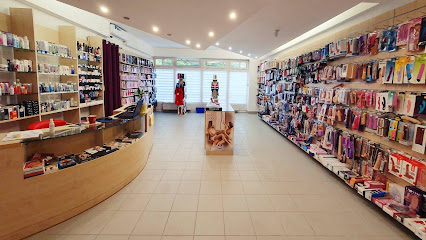
Univer
Experience Kecskemét's shopping charm at Univer, where local flavors and quality products meet in a welcoming atmosphere.

Office Shoes - Kecskemét - Malom Központ
Explore a diverse range of stylish footwear at Office Shoes in Kecskemét's Malom Központ, perfect for every occasion and style.

Flying Tiger Copenhagen
Explore Flying Tiger Copenhagen in Kecskemét for a unique shopping experience filled with fun, creativity, and unforgettable souvenirs.

MASNI Női Divatáru Üzlet
Explore the latest women's fashion trends at MASNI Női Divatáru Üzlet in Kecskemét, a must-visit boutique for style-savvy travelers.

Bak-Elit ajándék- és italszaküzlet
Discover unique gifts, exquisite wines, and artisanal candies at Bak-Elit ajándék- és italszaküzlet in Kecskemét, Hungary - a must-visit for souvenirs.

Takko Kecskemét
Explore Takko Kecskemét for trendy and affordable clothing for the whole family in the heart of Hungary.
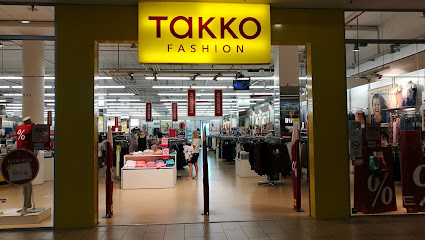
Essential bars & hidden hideouts
Black Cat Pub
Discover Kecskemét's nightlife at Black Cat Pub, a vibrant bar offering a wide selection of drinks and a welcoming atmosphere for all visitors.

Naés?
Discover the essence of Kecskemét's nightlife at Naés? - a vibrant bar offering delicious drinks and a lively atmosphere for all.
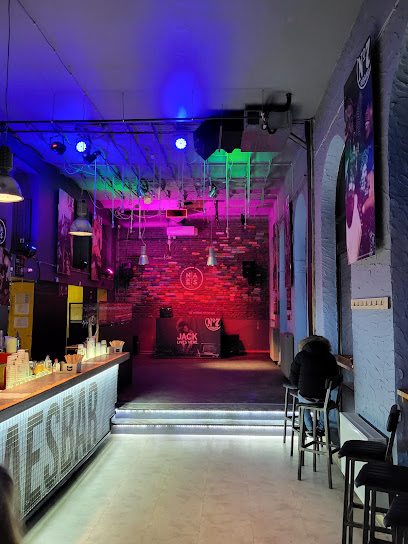
Game Pub
Discover Kecskemét's Game Pub: A lively bar offering gaming fun, delicious drinks, and a welcoming atmosphere perfect for all visitors.
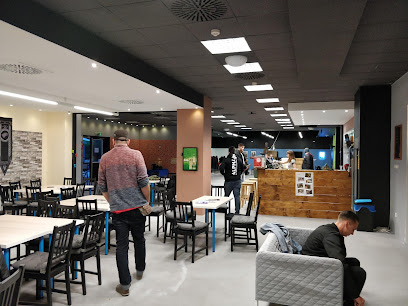
Red Rock Pub
Discover Kecskemét's lively atmosphere at Red Rock Pub, where great drinks and delightful food create an unforgettable experience.

DiVino Kecskemét Wine Bar
Experience the charm of Kecskemét at DiVino Wine Bar, where exquisite wines and delightful pairings await every visitor.

Kilele Music Cafe
Experience Kecskemét's vibrant music culture at Kilele Music Cafe, a perfect spot for drinks and live performances in a lively atmosphere.

Gyöngy Pub
Experience the heart of Kecskemét at Gyöngy Pub, where local flavors meet a vibrant atmosphere in a charming brasserie setting.

Bar Viola
Experience the vibrant local atmosphere at Bar Viola, Kecskemét's charming bar for exquisite drinks and socializing.

Három Lámpás
Discover the lively nightlife of Kecskemét at Három Lámpás, a bar that offers great drinks and a friendly atmosphere for all.

Bomber Pub Kecskemét
Discover the lively Bomber Pub in Kecskemét, Hungary, where local flavors and vibrant nightlife create unforgettable experiences.

PlayGround
Experience the lively nightlife of Kecskemét at PlayGround, where drinks flow and friendships blossom in a vibrant atmosphere.
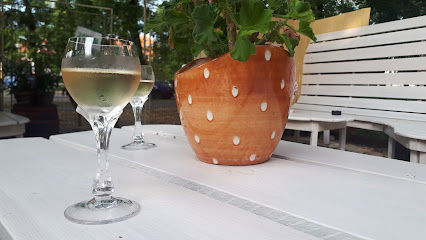
Resti Presszó (Bakter Presszó)
Experience the vibrant atmosphere of Resti Presszó, a must-visit bar in Kecskemét, Hungary, perfect for drinks and relaxation.

Ezüstfenyő Borozó
Discover the warm ambiance of Ezüstfenyő Borozó in Kecskemét, where local flavors and authentic Hungarian hospitality await you.

Sport Drinkbár
Discover a refreshing oasis in Kecskemét at Sport Drinkbár, where lively atmosphere meets a diverse selection of drinks for every palate.

Tifanny Pub
Experience the lively atmosphere of Tifanny Pub in Kecskemét, where locals and travelers gather for drinks, music, and good cheer.

Local Phrases
-
- HelloSzia
[see-ah] - GoodbyeViszlát
[vee-slaat] - YesIgen
[ee-gen] - NoNem
[nem] - Please/You're welcomeKérem
[key-rem] - Thank youKöszönöm
[kur-suh-noem] - Excuse me/SorryElnézést
[el-nay-zayst] - How are you?Hogy vagy?
[hoj vaj] - Fine. And you?Jól vagyok. És te?
[yol vaj-yok ays te] - Do you speak English?Beszélsz angolul?
[bes-ayl-s ang-oh-lool] - I don't understandNem értem
[nem ayr-tem]
- HelloSzia
-
- I'd like to see the menu, pleaseSzeretnék látni a menüt, kérem
[ser-et-nayk laht-nee ah meh-nooht, key-rem] - I don't eat meatNem eszem húst
[nem es-em hoost] - Cheers!Egészségedre!
[ay-gesh-shay-gehd-reh] - I would like to pay, pleaseFizetnék, kérem
[fee-zeht-nayk, key-rem]
- I'd like to see the menu, pleaseSzeretnék látni a menüt, kérem
-
- Help!Segítség!
[sheh-geet-sayg] - Go away!Menj el!
[men-y el] - Call the Police!Hívj rendőrt!
[heev rayn-durt] - Call a doctor!Hívj orvost!
[heev or-vosht] - I'm lostElvesztem
[el-veh-stem] - I'm illBeteg vagyok
[beh-tehg vaj-yok]
- Help!Segítség!
-
- I'd like to buy...Szeretnék vásárolni...
[ser-et-nayk vah-sha-rool-nee] - I'm just lookingCsak nézelődök
[chak nay-zay-loo-dook] - How much is it?Mennyibe kerül?
[men-nee-beh keh-rool] - That's too expensiveTúl drága
[tool draa-gah] - Can you lower the price?Le tudnád engedni az árat?
[leh tood-naad eng-ehd-nee ahz ah-raht]
- I'd like to buy...Szeretnék vásárolni...
-
- What time is it?Mennyi az idő?
[men-yee ahz ee-doh] - It's one o'clockEgy óra van
[ejj oh-rah vahn] - Half past (10)Fél tizenegy
[fayl tee-zehn-ay] - MorningReggel
[reh-ggel] - AfternoonDélelőtt
[day-le-loht] - EveningEste
[ehs-teh] - YesterdayTegnap
[teg-nahp] - TodayMa
[mah] - TomorrowHolnap
[hol-nahp] - 1Egy
[ejj] - 2Kettő
[ket-toh] - 3Három
[haa-rom] - 4Négy
[nayj] - 5Öt
[oet] - 6Hat
[haht] - 7Hét
[hayt] - 8Nyolc
[nyoltz] - 9Kilenc
[kee-lents] - 10Tíz
[teeez]
- What time is it?Mennyi az idő?
-
- Where's a/the...?Hol van a...
[hol vahn ah] - What's the address?Mi a cím?
[mee ah cheem] - Can you show me (on the map)?Meg tudnád mutatni (a térképen)?
[meg tood-naad moo-tat-nee ah tair-kay-pen] - When's the next (bus)?Mikor jön a következő (busz)?
[mee-kor yuhn ah kuh-vet-keh-zoh boos] - A ticket (to ....)Egy jegyet (....-ba)
[ejj ye-yeht bah]
- Where's a/the...?Hol van a...
History of Kecskemet
-
Kecskemét, located at the geographical center of Hungary, has a history that dates back to the early Middle Ages. The first recorded mention of Kecskemét was in 1368. However, archaeological findings suggest that the area was inhabited even earlier, with evidence of settlements from the Neolithic period. The town's strategic location contributed to its early development as a trading post and agricultural hub.
-
Kecskemét was occupied by the Ottoman Empire in 1526, which brought about significant changes in the town's structure and culture. The Ottomans ruled the region until the late 17th century, and during this period, Kecskemét experienced both hardship and growth. The town was often a target of military campaigns, yet it also became a melting pot of cultures, with the introduction of Islamic architecture and traditions.
-
After the liberation from Ottoman rule, Kecskemét began a period of reconstruction and growth. The 18th century was marked by the rebuilding of churches, schools, and public buildings. This era saw the construction of many of the town’s iconic structures, including the Great Church, which remains a central landmark. The town's economy also flourished, driven by agriculture, particularly viticulture and fruit farming.
-
The 19th century was a transformative period for Kecskemét, as it was for much of Hungary. The Hungarian Revolution of 1848-49 against Habsburg rule saw active participation from the town's residents. The subsequent Austro-Hungarian Compromise of 1867 brought a period of relative stability and prosperity. Kecskemét continued to grow, with the construction of new infrastructure, including the railway, which connected it more effectively to other parts of Hungary.
-
The 20th century brought both turmoil and progress to Kecskemét. The two World Wars had significant impacts on the town, leading to destruction and loss. However, the post-war period saw extensive reconstruction efforts. During the socialist era, Kecskemét became known for its industrial development, particularly in the fields of light industry and agriculture. The town also saw the establishment of important cultural institutions, such as the Katona József Theatre and the Kodály Institute.
-
Today, Kecskemét is a vibrant city that blends its rich historical heritage with modern development. It is known for its cultural festivals, beautiful architecture, and thriving economy. The city is also famous for its association with Zoltán Kodály, one of Hungary’s most renowned composers and music educators. Kecskemét's commitment to preserving its history while embracing contemporary advancements makes it a unique and fascinating destination for travelers.
Kecskemet Essentials
-
Kecskemét is located in central Hungary, approximately 85 kilometers southeast of Budapest. The nearest airport is Budapest Ferenc Liszt International Airport. From the airport, you can take a direct train or bus to Kecskemét, which typically takes around 1.5 to 2 hours. Alternatively, you can rent a car at the airport and drive to Kecskemét via the M5 motorway.
-
Kecskemét has a well-developed public transportation system, including buses and trains that connect the city with other parts of Hungary. Local buses are frequent and cover most parts of the city. Taxis are also readily available and can be hailed on the street or booked via phone. For a more flexible option, consider renting a bicycle, as Kecskemét is quite bike-friendly with numerous cycling paths.
-
The official currency in Hungary is the Hungarian Forint (HUF). Credit and debit cards are widely accepted in most hotels, restaurants, and shops. ATMs are plentiful throughout Kecskemét, and you can easily withdraw cash. However, it is advisable to carry some cash, especially for small purchases and in rural areas.
-
Kecskemét is generally a safe city for tourists. However, like any other city, it is recommended to take standard precautions. Avoid walking alone late at night in poorly lit areas and be cautious of your belongings in crowded places. There are no specific high-crime areas targeting tourists, but always stay vigilant and aware of your surroundings.
-
In case of emergency, dial 112 for immediate assistance. Kecskemét has a local police station and medical facilities, including hospitals and clinics. It is advisable to have travel insurance that covers medical emergencies. Pharmacies are available throughout the city for over-the-counter medications and minor health issues.
-
Fashion: Do dress smart-casual when visiting restaurants and cultural sites. Avoid wearing overly casual or revealing clothing in religious places. Religion: Do respect local customs and traditions. When visiting churches, ensure you are dressed modestly. Public Transport: Do validate your ticket before boarding buses or trains. Don't be loud or disruptive. Greetings: Do greet people with a handshake. A smile and a nod are also appreciated. Eating & Drinking: Do try local specialties like 'gulyás' and 'lángos'. Don't refuse food or drink offered by locals, as it is considered rude.
-
To experience Kecskemét like a local, visit the local markets, especially the Great Market Hall, where you can find fresh produce and traditional Hungarian goods. Engage with locals, as they are often friendly and willing to share insights about the city's history and culture. Don't miss the Kecskemét Town Hall and its unique Art Nouveau architecture. For a relaxing experience, spend some time at the Kecskemét Arboretum, a beautiful botanical garden.
Trending Landmark in Kecskemet
-
Fekete Gólya Étterem
-
Cifra Palace
-
Hotel Három Gúnár
-
Szórakaténusz Toy Museum and Workshop
-
Co-Cathedral of the Ascension of the Lord, Kecskemét
-
Kecskemét Város - Bozsó Gyűjtemény Alapítvány
-
Kecskeméti arborétum
-
Zwack Kecskemét Brandy Manufacture
-
Kecskeméti Római Katolikus Főplébánia
-
Kecskemét Főtér
-
Emlékkő
-
Rejtélyek Háza, Kecskemét
-
Szabadság tér
-
Kálvin tér
-
Kossuth-szobor
Nearby Cities to Kecskemet
-
Things To Do in Szeged
-
Things To Do in Budapest
-
Things To Do in Subotica
-
Things To Do in Szekesfehervar
-
Things To Do in Vac
-
Things To Do in Tatabanya
-
Things To Do in Eger
-
Things To Do in Salgotarjan
-
Things To Do in Veszprem
-
Things To Do in Pecs
-
Things To Do in Arad
-
Things To Do in Miskolc
-
Things To Do in Debrecen
-
Things To Do in Gyor
-
Things To Do in Novi Sad












